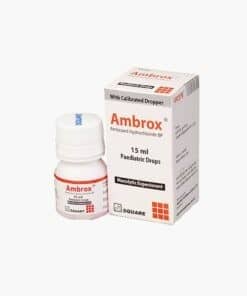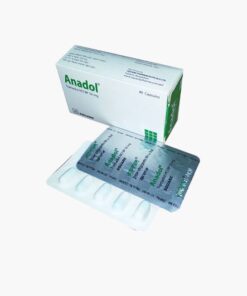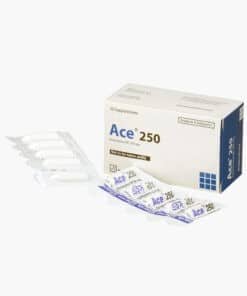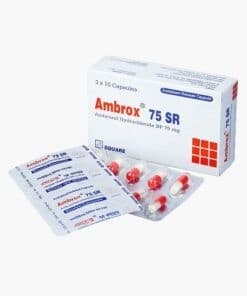Subtotal: ৳ 100.00
Flacort | Syrup | 60 ml | 1 pcs
৳ 200.00
Brand Name: Flacort Oral Suspension
Generic: Deflazacort
6 mg/5 ml
Manufacturer: Aristopharma Ltd.
60 ml bottle: ৳ 200.00
Indications
- Anaphylaxis, asthma, severe hypersensitivity reactions
- Rheumatoid arthritis, juvenile chronic arthritis, polymyalgia rheumatica
- Systemic lupus erythematosus, dermatomyositis, mixed connective tissue disease (other than systemic sclerosis), polyarteritis nodosa, sarcoidosis
- Pemphigus, bullous pemphigoid, pyoderma gangrenosum
- Minimal change nephrotic syndrome, acute interstitial nephritis
- Rheumatic carditis
- Ulcerative colitis, Crohn’s disease
- Uveitis, optic neuritis
- Autoimmune haemolytic anaemia, idiopathic thrombocytopenic purpura
- Acute and lymphatic leukaemia, malignant lymphoma, multiple myeloma
- Immune suppression in transplantation
Therapeutic Class
Pharmacology
Dosage & Administration
Adults:
- For acute disorders: up to 120 mg/day Deflazacort may need to be given initially. Maintenance doses in most conditions are within the range 3-18 mg/day.
- Rheumatoid arthritis: The maintenance dose is usually within the range 3-18 mg/day. The smallest effective dose should be used and increased if necessary.
- Bronchial asthma: In the treatment of an acute attack, high doses of 48-72 mg/day may be needed depending on severity and gradually reduced once the attack has been controlled. For maintenance in chronic asthma, doses should be titrated to the lowest dose that controls symptoms.
- Other conditions: The dose of Deflazacort depends on clinical need titrated to the lowest effective dose for maintenance. Starting doses may be estimated on the basis of ratio of 5 mg prednisone or prednisolone to 6 mg Deflazacort.
Children: Alternate day administration may be appropriate. Doses of Deflazacort usually lie in the range 0.25-1.5 mg/kg/day. The following ranges provide general guidance:
- Juvenile chronic arthritis: The usual maintenance dose is between 0.25 to 1.0 mg/kg/day.
- Nephrotic syndrome: Initial dose of usually 1.5 mg/kg/day followed by down titration according to clinical need.
- Bronchial asthma: The initial dose should be between 0.25 – 1.0 mg/kg on alternate days.
- Deflazacort withdrawal: In patients who have received more than physiological doses of systemic corticosteroids (approximately 9 mg per day or equivalent) for greater than 3 weeks, withdrawal should not be abrupt. How dose reduction should be carried out depends largely on whether the disease is likely to relapse as the dose of systemic corticosteroids is reduced.
Interaction
Contraindications
Side Effects
Pregnancy & Lactation
Use in pregnancy: Deflazacort does cross the placenta. When administered for prolonged periods or repeatedly during pregnancy, corticosteroids may increase the risk of intra-uterine growth retardation. As with all drugs, corticosteroids should only be prescribed when the benefits to the mother and child outweigh the risks.
Use in lactation: Corticosteroids are excreted in breast milk. Doses up to 50 mg daily of Deflazacort are unlikely to cause systemic effects in the infant.
Precautions & Warnings
Use in Special Populations
Elderly: In elderly patients, no special precautions other than those usually adopted in patients receiving glucocorticoid therapy are necessary.
Hepatic impairment: In patients with hepatic impairment, blood levels of Deflazacort may be increased. Therefore the dose of Deflazacort should be carefully monitored and adjusted to the minimum effective dose.
Renal impairment: In renal impaired patients, no special precautions other than those usually adopted in patients receiving glucocorticoid therapy are necessary.
Overdose Effects
Storage Conditions
| Generic Name | Deflazacort |
|---|---|
| bottle | 60 ml |
Only logged in customers who have purchased this product may leave a review.












Reviews
There are no reviews yet.